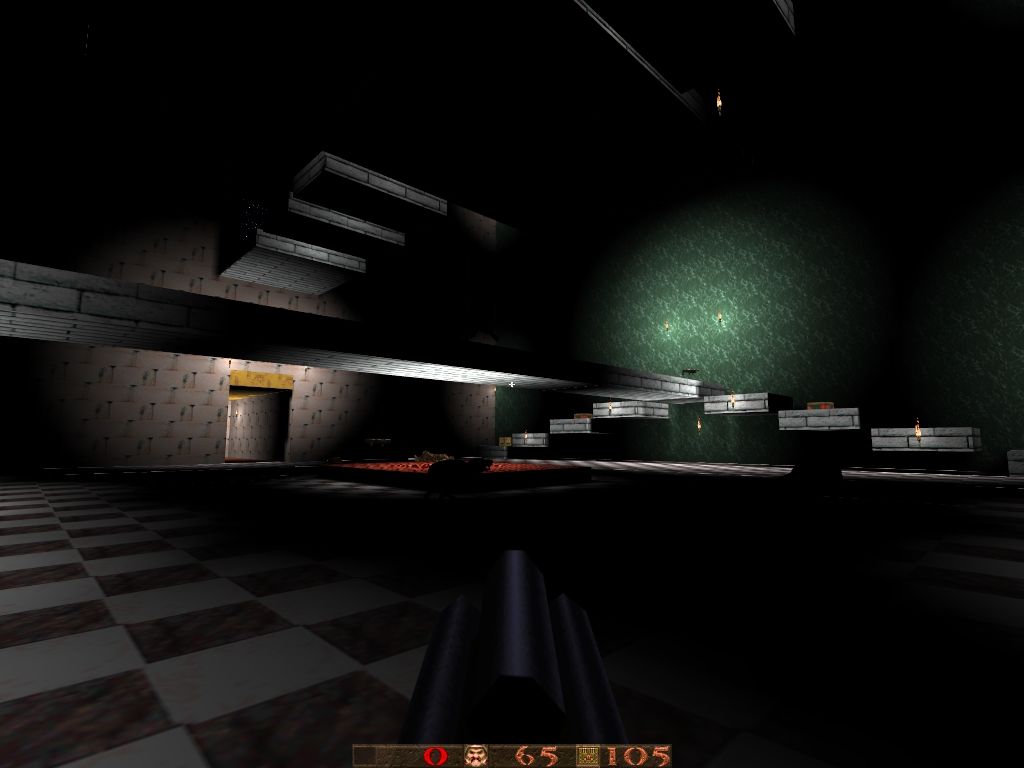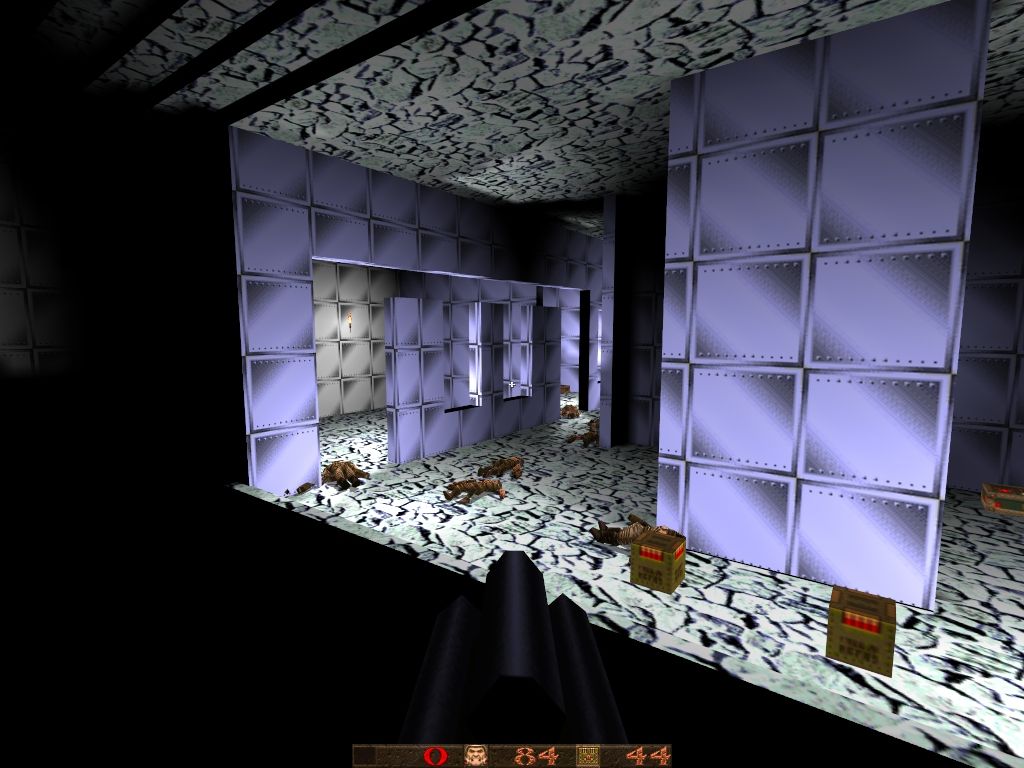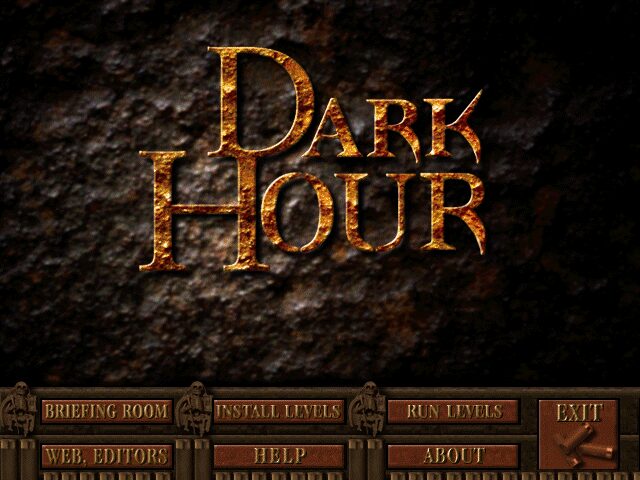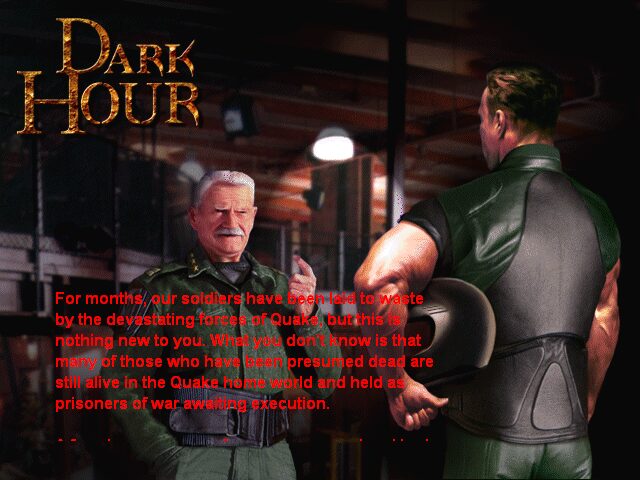Retro Replay Review
Gameplay
Dark Hour for Quake breathes new life into id Software’s classic shooter by delivering a finely tuned collection of single-player and multiplayer maps. From the moment you load the pack—whether through the DOS or Windows installer—you’re thrust into environments that challenge both your aim and your tactical instincts. The layouts are clever, often requiring you to navigate tight corridors and open arenas with equal aplomb, forcing a balance between cautious exploration and aggressive combat.
(HEY YOU!! We hope you enjoy! We try not to run ads. So basically, this is a very expensive hobby running this site. Please consider joining us for updates, forums, and more. Network w/ us to make some cash or friends while retro gaming, and you can win some free retro games for posting. Okay, carry on 👍)
In single-player mode, each map unfolds like a mini-campaign, showcasing varied pacing and enemy placement. You’ll find yourself ambushed by hidden spawning points in claustrophobic rooms, then sprinting across wide outdoor areas under fire. This ebb and flow keeps the adrenaline high, as you must adapt your weapon choice and movement strategy on the fly. The level design emphasizes verticality—ramps, ledges, and drop-offs abound—turning every firefight into a three-dimensional puzzle.
Multiplayer aficionados will appreciate how Dark Hour’s maps cater to both deathmatch veterans and newcomers alike. Whether you’re duking it out in close-quarters T-junctions or exchanging railgun shots across a chasm, these arenas strike a satisfying balance. The add-on’s independent map files make hosting a breeze, and you’ll find plenty of secret routes and power-up locations that reward map knowledge and exploration. Overall, the gameplay experience remains faithful to Quake’s roots while injecting fresh, community-driven content.
Graphics
Graphically, Dark Hour for Quake doesn’t reinvent the wheel—it works within the constraints of the original Quake engine and does so exceptionally well. The textures feel handcrafted, with a coherent aesthetic that blends medieval architecture, industrial machinery, and eldritch motifs. There’s a palpable sense of decay in stone walls and rusted metal surfaces, creating an atmosphere that’s both foreboding and immersive.
Lighting plays a crucial role in this expansion, with dynamic flickering torches, strobes in outer spaces, and ominous red glows in demon-infested chambers. These effects not only enhance the visual experience but also serve as gameplay cues, guiding you toward objectives or tipping you off about lurking dangers. While polygon counts remain modest by modern standards, clever use of brushwork and height variations yields environments that feel surprisingly organic.
Multiplayer maps maintain this graphical fidelity while optimizing for frame rate—a critical consideration for fast-paced matches. Textures load without tearing, and the level geometry never overwhelms the engine’s capabilities. Whether you stick to the classic software renderer or opt for an OpenGL enhancement, Dark Hour’s visuals remain crisp and detailed, proving that great level design can still shine even in an aging engine.
Story
Though Dark Hour for Quake is predominantly a level pack rather than a narrative-driven expansion, it succeeds in weaving a subtle thread of lore through its environmental storytelling. Each map feels like a chapter in a larger saga—a dark ritual chamber hints at occult experiments, while a flooded subway station suggests a city long since abandoned. Players who pay attention to visual cues will piece together a narrative of corruption and desperate resistance.
In the absence of cutscenes or written text, the story emerges through map transitions and thematic consistency. One moment you might be exploring a sanctum where tormented souls wail behind barred gates, the next you’re traversing a sprawling factory where machinery hums with an otherworldly energy. This contrast builds tension and suggests a world threatened on multiple fronts, leaving much to the player’s imagination.
The multiplayer arenas, while designed for competitive play, also complement this thematic tapestry. Arena names like “Fallen Keep” or “Forsaken Depths” evoke a sense of place and purpose, even if the primary objective is to outscore your opponents. By maintaining a unified visual and atmospheric style across all maps, Dark Hour quietly crafts a cohesive universe that feels bigger than the sum of its parts.
Overall Experience
Dark Hour for Quake stands out as a testament to the enduring appeal of community-made content. The installation process is straightforward—especially with both Windows and DOS installers included—allowing you to dive in without wrestling with file management. Once underway, the add-on delivers dozens of hours of fresh Quake action, whether you’re storming single-player strongholds or battling friends online.
The variety in map design ensures you never encounter the same challenge twice. From labyrinthine corridors to open battlegrounds, the pack covers the full spectrum of Quake’s gameplay potential. Secrets and alternate routes reward exploration, while balanced power-up placement keeps multiplayer sessions fair yet frantic. This rich diversity makes Dark Hour an essential add-on for anyone looking to extend their Quake experience.
Ultimately, Dark Hour for Quake captures the spirit of its source material while presenting it in a new light. It offers a polished, cohesive set of levels that honor the original engine’s strengths and push its boundaries. For both solo adventurers and competitive players, this add-on is a must-have—proving that even in the modern era, classic shooters can still deliver heart-pounding thrills and memorable encounters.
 Retro Replay Retro Replay gaming reviews, news, emulation, geek stuff and more!
Retro Replay Retro Replay gaming reviews, news, emulation, geek stuff and more!









Reviews
There are no reviews yet.